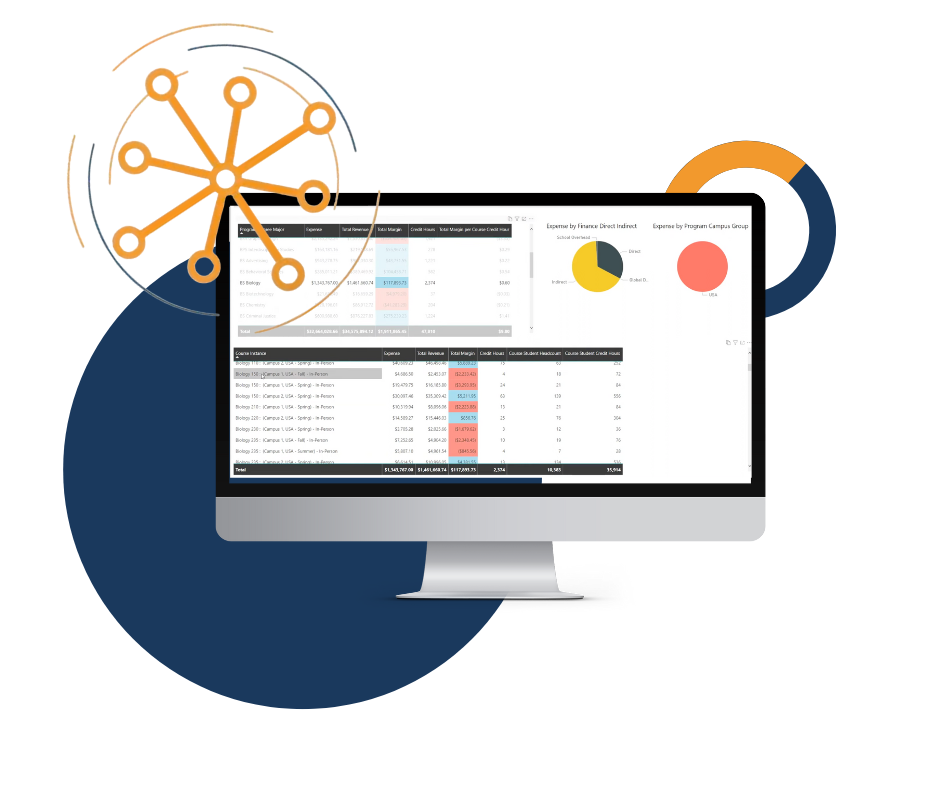Sustainable Management
Helps Organizations Transition to a Greener Business
in a Financially Sustainable Way
Activity-Based Cost Models: Cracking the Code to a Greener Future
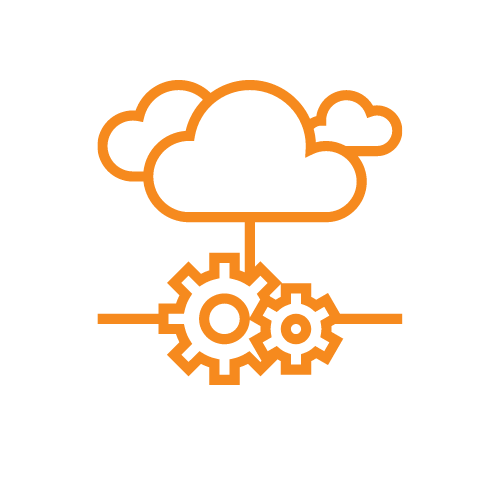
A lot of companies have set a net zero goal when they expect to achieve net zero emissions, however only a small proportion of those companies know how much it will cost to get there and are able to measure it properly.
Sustainable Management helps organizations transition to a greener business in a financially sustainable way. It provides a method of properly calculating current emissions at the individual product/service level, but also how much it costs to deliver all the products and services and the associated revenue received.
The key to the solution is to identify all the resources used by the organization and identify the financial cost and the Greenhouse gas (GHG) emissions associated with the resources. Then allocate all these resources, through the activities or processes and finally to the final product or service delivered. This is Activity-Based Costing with a twist, it is an ABC model with the inclusion of GHG emissions. This methodology was developed as part of the CAM-I Environmental Sustainability Interest Group over ten years ago. A number of papers and presentations were developed as part of the interest group, one in particular was written with CMA Canada (Now CPA Canada), Grant Thornton, International Federation of Accountants, Boeing, Weber State University, SAS Institute and Dresser-Rand (Now Siemens Energy) and can be downloaded here.
The E-liability Institute is a global non-profit advancing the urgent accounting upgrade needed to drive green innovation. E- (or environmental-) liability is an accounting algorithm that allows organizations to produce real-time, accurate, and auditable data on their total direct and supplier emissions (referred to as “cradle-to- gate”), and those for any of its products and services – say, a smartphone, a ton of cement, or a search on its website. The E-liability methodology was created by Professor Karthik Ramanna (University of Oxford) and Professor Robert Kaplan (Harvard University). The E-liability method solves the problem of properly calculating emissions on a per product basis as well as the issue of multi-counting Scope 3 emissions across the entire value chain. If you would like to read more about the methodology here is their Harvard Business Review Article.
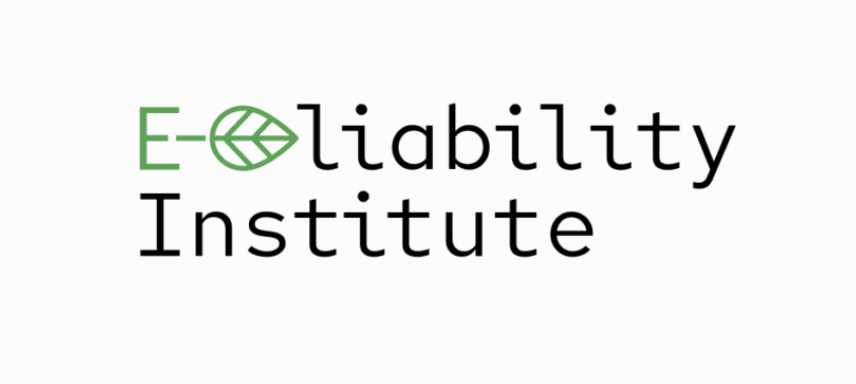
Where to Start Sustainable Management
This may sound quite complex, but it’s reasonably straight forward. The E-liability institute has a number of pilot projects underway. The initial pilot models should be kept simple and focus on the major emissions first.
The General Steps of the Pilot Project Could Include:
Identify Organization Outputs
- From amongst the most carbon-intensive outputs, select one which has criteria that allow it to participate in the pilot (e.g. emissions data availability, controlled process – e.g., audited or quality assurance, lower complexity product)
- Determine the organization’s emissions calculation and cost accounting
methodologies
Identify Organization Suppliers – Focus on Key Suppliers
- Based upon the key input materials and where possible on suppliers who
have emissions data
Approach key suppliers to provide greenhouse gas emissions on a per
product/service basis. If not available, look for public sources of data
- Document data gaps and assumptions in using public data
Identify processes for producing products/services
Calculate Site Emissions – Scope 1 and Scope 2
- Identify any assumptions/estimates specific to the output, preference audited or quality-assured sources of data
If an ABC model exists, review model. Can GHG emissions be included in the existing model? If not:
- Obtain a full extract of General Ledger data for the period of assessment.
Review and break into major cost segments for driving through model - Create high level activities
- Identify top drivers of organization (6-12)
- Identify any source systems that contain data for organization outputs,
processes, driver metrics (operational systems or monitoring systems for
weight, quantities, SqFt/M etc.), HR systems, Facility Management
systems etc
The objective is to create broad business allocation rules that are consistent across the entire organization. If the organization is too complex, we may need to focus on key processes, i.e. those that contribute the most GHG emissions.
- Utilize information gained about complex outputs/products/processes/activities to develop a next generation research idea – there should not be anything too complex to measure in the long-term
You can read about an E-liability pilot implementation here
What Specifically is the Solution?
It is an enhanced ABC Model with the inclusion of GHG Emissions with standard cost data.
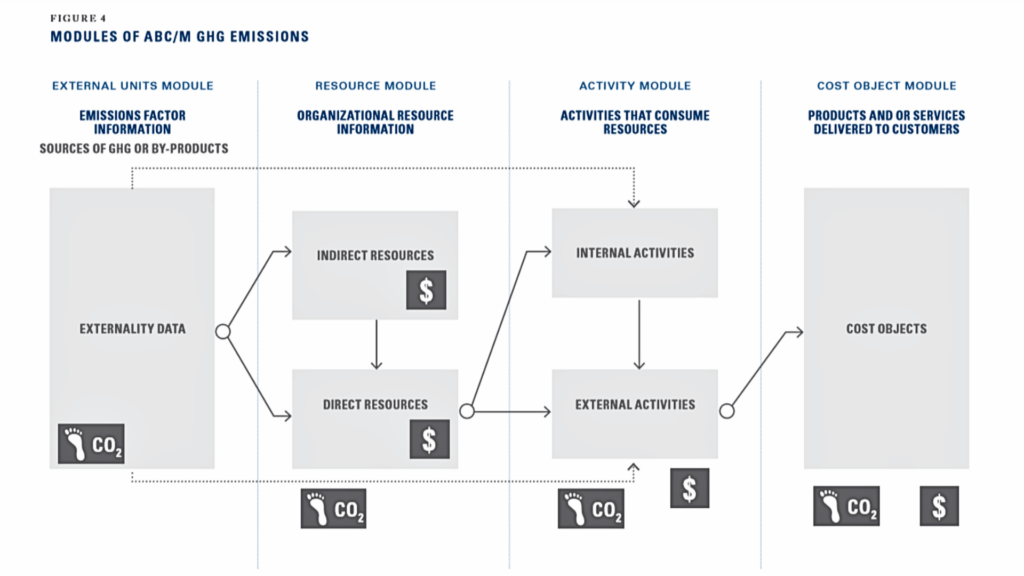
The major benefit of the E-liability methodology is that organizations only have to focus on what they control. That is they don’t have to estimate or guess the entire Scope 3 upstream and downstream emissions, simply the emissions that are directly produced or consumed by the organization. The per-product GHG Emissions can then be passed to the organization’s customers as their Scope 3 inputs and so on down the value chain. This could be achieved using a public blockchain. From an accounting perspective, the GHG emissions will be treated just like a Value Added Tax. The trick is getting suppliers to provide their GHG Emissions on a per product basis, if they don’t have this type of solution then they will have to guess or estimate those emissions. But as we have discovered in pilot models that suppliers are interested in creating their own models for their own emissions reduction projects.
What Does the Final Model Look Like?
Here is an example of a demo model for a university, this is the inclusion of Scope 2 GHG Emissions
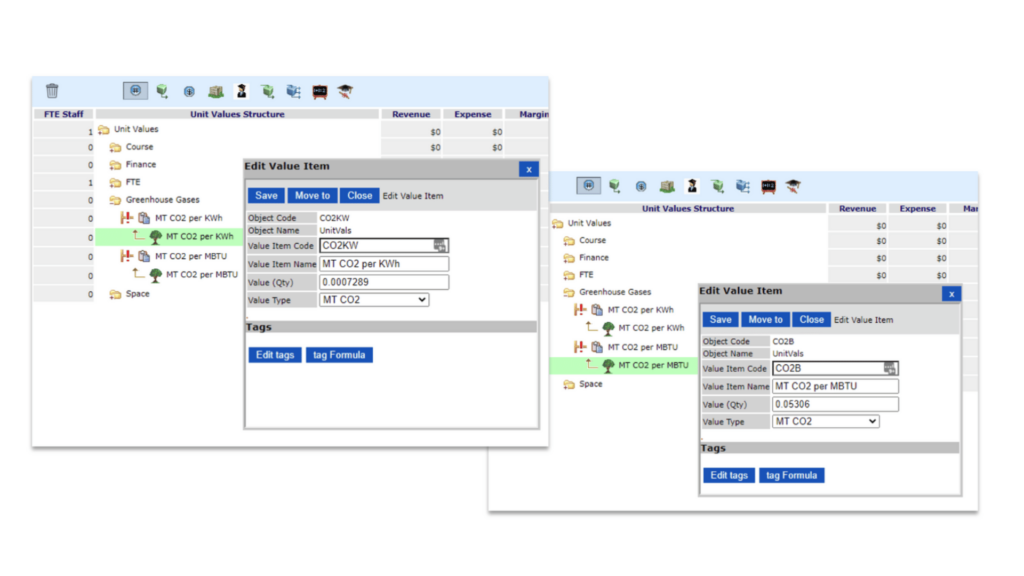
For Supplier embedded GHG Emissions this can be an additional Value that can be attached to specific resources consumed and it will follow the resource through the entire ABC model to the final product. Exactly the same process as allocating Scope 2 emissions through the model as shown below.
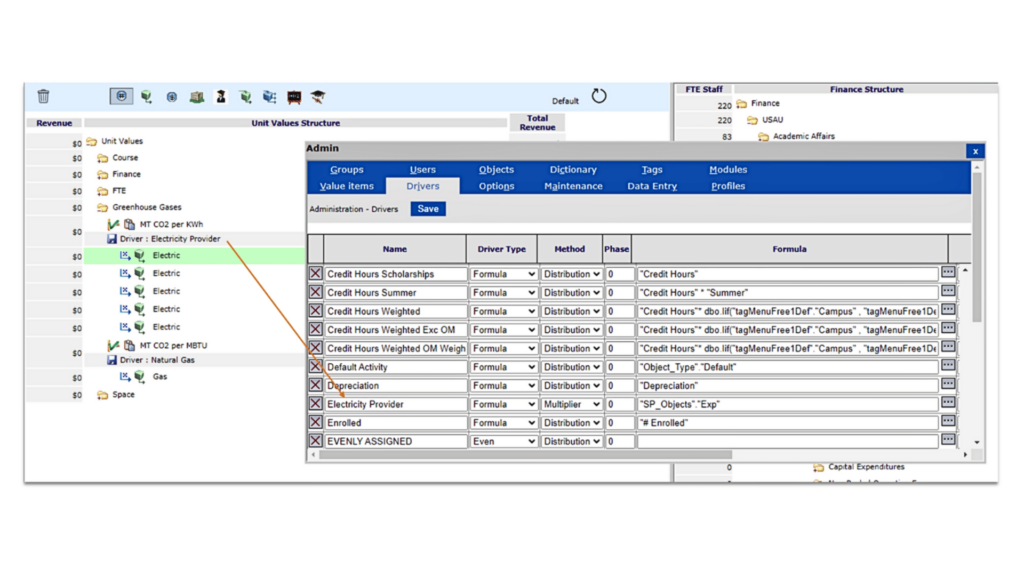
The final output of the model will include all expenses, revenues, margins and total GHG Emissions (CO2 equivalent)
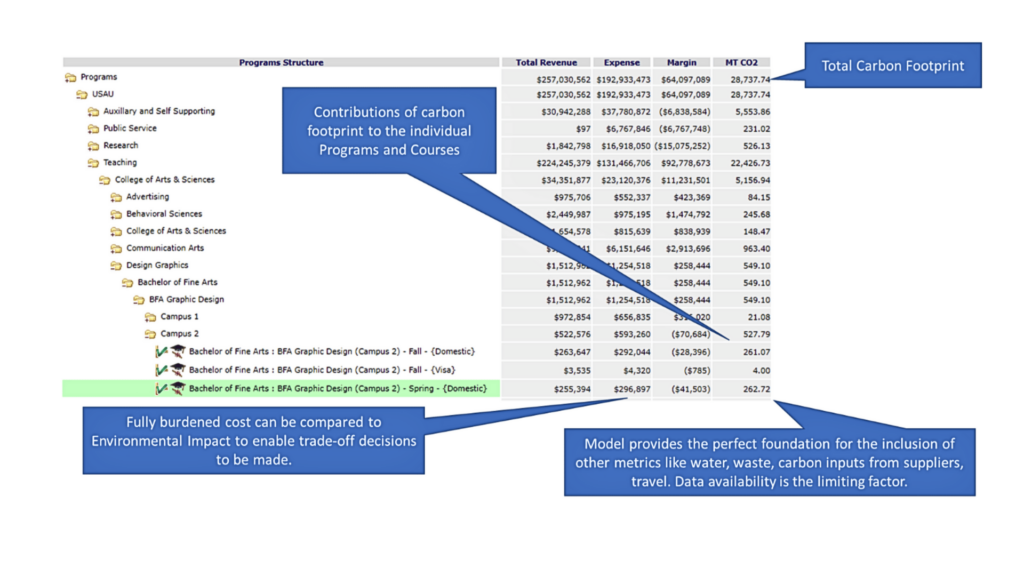
What are the Benefits of this Type of Model?
The major benefit is that this model is developed for your internal management and not specifically for external reporting, although it can absolutely support your external reporting requirements.
If your organization is serious about reducing GHG emissions, then you must develop a system to measure it properly. This system needs to have sufficient detail to determine the per- product/services emissions from a “bottoms up” approach. That is, starting with the resources with their associated expense and GHG emissions and determining how they contribute to the final product/service. Overhead is a large and growing part of modern organizational management, so being able to properly track overhead expenses and overhead GHG emissions, in the form of Scope 2 (Electricity, Gas etc) is vital, this is the core strength of ABC.
The completed model can then be used to support a range of strategic decisions:
- If green suppliers and greener processes lead to increased cost of production should the price be increased as well but with a solid marketing plan for the greener product, backed up by a robust and auditable model (not greenwashing).
- If there is an increase in cost of production by moving to greener suppliers and processes, is that temporary or persistent? An example would be an increase in expenses for the installation of solar, but over time can lead to a reduction in electricity expenses.
- Allows full visibility of all resources and processes to support improvements in efficiency.
- Compare all products/services in a matrix of GHG Emissions vs Profit to determine internal actions that can be taken to transition from High Emissions to Low Emissions and Low Profit to High Profit. Those products/services that are High Emissions and Low Profit could be subject to serious review if they can’t be transitioned.
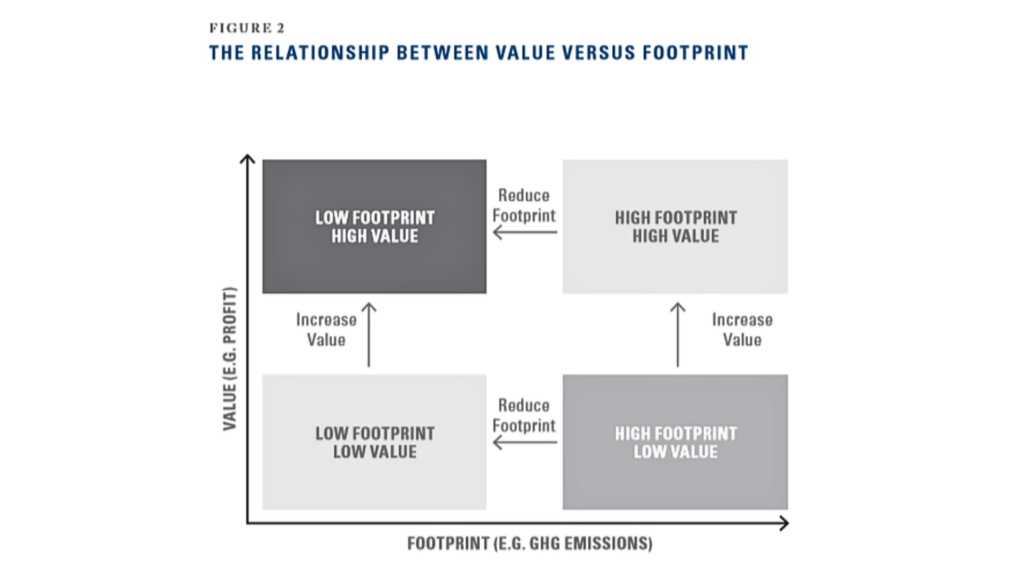
Modeling Platform trusted by:

Our Modeling Platform Empowers You to Take Control of Your Costs and Emissions and Manage Them with Precision
Request a Demo
Discover the power of Pilbara Insights and take control of your organization’s financial future. Request a demo or contact our expert team to learn how our Activity-Based Cost Modeling engine can optimize your costs, drive sustainable growth, and boost profitability. Don’t let inefficiencies hold you back—start optimizing your costs today!
